by W.S. Cranshaw * (5/13)
Quick Facts…
- Oystershell scale develops on the bark of many common trees and shrubs and can cause serious injury during outbreaks.
- Oystershell eggs typically hatch in late May or early June and the active ‘crawlers’ that emerge move about to find new sites to feed.
- Sprays applied when the crawlers are present can be very effective in controlling oystershell scale.
- Oils are useful for control of oystershell scale.
The oystershell scale, Lepidosaphes ulmi, is the most damaging scale insect present in Colorado. It develops on the bark of trunks and limbs of a wide range of commonly grown deciduous trees and shrubs, including aspen, ash, cotoneaster, poplars, willow and lilac.

Figure 1. Mature oystershell scales settled near the bud of an aspen. |
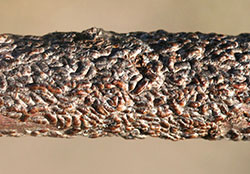
Figure 2. During outbreaks oystershell scales can encrust branches, which typically kills the affected limb. |
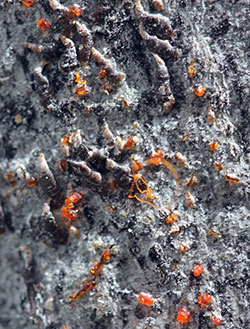
Figure 3. Oystershell scale injuries often weaken plants so they become susceptible to plant pathogens. Cytospora fungi, indicated by the orange fruiting bodies, frequently develop in areas where oystershell scale infests aspen and poplar. |
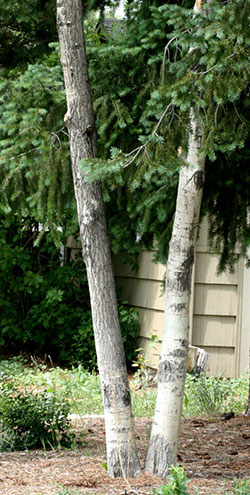
Figure 4. Even if oystershell scale is controlled, affected areas of aspen bark later develop a fissured appearance, as indicated by the trunk on the left. |
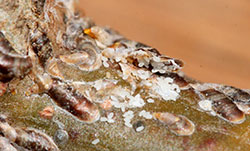
Figure 5. Eggs of the oystershell scale, exposed from under the waxy cover of the mother. |
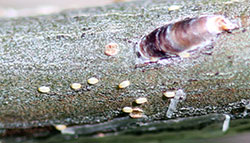
Figure 6. Oystershell scale ‘crawlers’ below the old cover of a now dead scale. The crawler stage occurs after eggs hatch and is the only mobile stage of oystershell scale. |
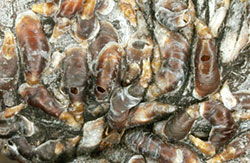
Figure 7. Sometimes holes are present in the scale cover, which indicated the insect has been attacked by a parasitic wasp. Photograph courtesy of Jim Kalisch/University of Nebraska. |
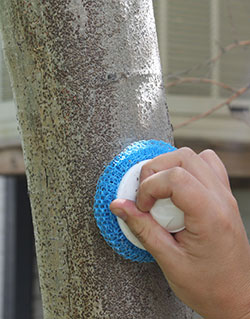
Figure 8. Gentle scrubbing can easily dislodge oystershell scale from bark. |

Figure 9. Poplar scales on aspen. The waxy cover of the poplar scale is round and often blends very well with the bark of aspen. |
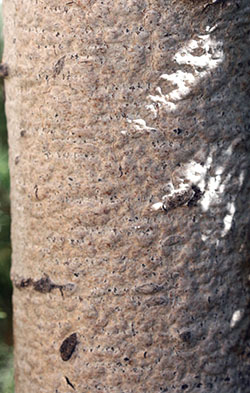
Figure 10. A bubbly appearance develops on the bark of aspen affected by poplar scale. |
The most commonly observed form of the oystershell scale is the covering of the full-grown female scale attached to the bark (Figure 1). Mature scales are about 1/8-inch long, brown or gray, and the general shape of an oyster’s shell. On many plants the scale insect blends in well with the underlying bark and it is not uncommon for extensive crusts of scales, and injury symptoms, to be present before they are observed (Figure 2).
Developing oystershell scales feed by sucking the fluids of cells underlying the bark, often killing the cells at the feeding site. In high populations, oystershell scales may cause limb dieback and, during heavy outbreaks, plant death can occur from outbreaks of oystershell scale. Oystershell scale damage can also weaken plants so that they become more susceptible to pathogens (Figure 3). For example, oystershell scale often damages aspen in a manner that allows for development and spread of cankers produced by Cytospora fungi. Bark cracking often occurs on areas of bark previously damaged by oystershell scale (Figure 4).
Life History and Habits
There is one generation of oystershell scale produced per year in the region. Winter is spent in the egg stage under the old cover of the mother scale (Figure 5). The pearly white eggs hatch on warm, calm days in late May or early June; Memorial Day is often the approximate time when eggs hatch in most years, although there are substantial differences in egg hatch timing related to weather. Most eggs hatch over a fairly brief period of 2-3 weeks.
The newly emerged scales (Instar I nymphs), known as crawlers, are pale yellow and they are active insects that move over the bark in search of sites where they may feed (Figure 6). Crawlers are the only life stage of the oystershell scale that is mobile and it is during this brief period that they colonize plants. A few crawlers may disperse more widely, carried by wind or on the bodies of animals (birds, squirrels) that move from tree-to-tree.
Within a few days after egg hatch the crawlers have either successfully found a feeding site or perished. They then molt, at which time they lose their legs and become immobile. Over the next couple of months they gradually increase in size and become full-grown in midsummer. Eggs are laid in late summer and early fall and the mother scale dies at the end of the season. Males have not been observed in Colorado populations and regional oystershell scale populations appear to reproduce asexually. Eggs produced in late summer remain under the protective wax cover of the mother throughout winter. One generation is produced annually.
Management of Oystershell Scale
Natural enemies. Relatively few natural enemies appear associated with oystershell scale. Parasitic wasps, common elsewhere in North America, are present but uncommonly associated with oystershell scale in Colorado (Figure 7). Also seen feeding on some overwintering eggs of oystershell scale are predatory mites (Hemisarcoptes sp.). Many maturing scales and overwintering eggs die if areas of bark beneath them are killed, as happens frequently when Cytospora invades damaged limbs.
Cultural controls. Vigorous plant growth, provided by proper siting and care, appears to help reduce oystershell scale infestations. A common evidence of this is that often only one or two trunks in an ornamental clump planting are seriously infested, the others apparently resisting the insect.
Hand removal. On smaller trees, old scale coverings and eggs can be destroyed by scrubbing the bark with a soft plastic pad. Very heavily infested branches may need to be pruned (Figure 8).
Dormant season oil sprays. Various kinds of horticultural oils are available that are sprayed on plant for the purpose of covering and smothering insects and mites on plants. (See CSU Extension fact sheet 5.569, Insect Control: Horticultural Oils). When used during the time when plants are dormant, such applications are often referred to as ‘dormant oils’ and would be directed against the overwintering egg stage of oystershell scale.
Dormant season oil sprays can kill many of the overwintering eggs of oystershell scale. However, since they are well protected at this time, within the thick waxy cover of the now-dead mother, oils may not sufficiently penetrate to kill all the eggs. Dormant oil applications should be considered as an important management tool for this insect, but during outbreaks it usually should be supplemented with other controls.
Crawler sprays. The crawler period in the life history of the oystershell scale is highly vulnerable, as it lacks the waxy protective cover and is quite small. A great many insecticides commonly used on trees and shrubs can be effectively used to control oystershell scale if they are applied to coincide with the egg hatch/crawler period (crawler sprays).
Timing is critical as oystershell scale becomes much less vulnerable to most insecticides after the crawlers have settled, begun to feed, and molted to the next life stage during which the protective waxy cover begins to form. However, determining when the crawler period occurs does require some examination of the plants as timing can vary from season-to-season due to spring weather conditions. Crawlers are very small, but can be seen with careful examination of plants. Alternately they can be shaken off scale infested limbs onto a sheet of paper for easily view or can be trapped on double-sided sticky tape attached to infested limbs. Examinations to determine the onset of the crawler period should generally be begun around mid-May.
Although most any insecticide (and even a strong jet of water) can kill crawlers exposed on bark, insecticides that have some persistence will be most effective. This is because eggs will hatch over an extended period. Insecticides that can remain active on the bark throughout the egg hatch period can provide effective control of crawlers with a single application.
There are several insecticides that can be used as sprays to bracket the crawler period. Presently, most commonly available are various pyrethroid insecticides; pyrethroid insecticides that can be used on trees and shrubs include some products that contain active ingredients of bifenthrin, cyfluthrin, cyhalothrin, or permethrin. Other insecticides useful for control of crawlers contain the active ingredients acetamiprid, carbaryl, and malathion.
Summer season oil sprays. Most horticultural oils presently marketed are sufficiently refined to allow their use on plants when foliage is present. These ‘summer oils’ can be very effective for control of oystershell scale during early stages in their development, as post crawler sprays typically applied at some time in June. Young stages of oystershell scale, with minimally developed wax covers, can be effectively smothered with sprays of these oils.
Horticultural oils can also be combined with crawler treatments. The oils can provide improved coverage of the plant and will kill exposed stages of the insect.
Insect growth regulators. Pyriproxifen is an insecticide that acts by affecting the development of certain insects, a type of insect growth regulator (IGR) and can be applied during the crawler period and post-crawler period. Pyriproxifen is particularly effective against scale insects and quite selective in its effects. Many other insects, including most that are considered ‘beneficial’ (pollinators, natural enemies of insect pests) are not adversely affected by this product. Presently pyriproxifen is only sold for use by commercial applicators, under the trade name Distance.
Systemic insecticides. Several insecticides have the ability to move systemically within the plant and are very useful for control of many insects that affect trees and shrubs. However, those most commonly available, products that contain imidacloprid or chlothianidin as the active ingredient, generally have little effect on oystershell scale and other armored scales. This is because they fail to move in sufficient concentration to the feeding sites of these insects. (‘Soft scales,’ such as striped pine scale and cottony maple scale, are effectively controlled with these products.)
One systemic insecticide, dinotefuran, is effective against armored scales as it is more water soluble and mobile within the plant. Dinotefuran can be applied as a soil drench, for root uptake, or as a spray on the trunk, through which it is absorbed and subsequently translocated within the plant. At present formulations of dinotefuran for tree/shrub use (Safari, Zylam) are only available to commercial applicators.
Note: Old scales remain in place for several years after the scales have died. In order to determine if controls have been effective, old scales should be cleared from at least some of the branch, so that reinfestation can be detected. Also, when crushed, dead scales are dry and flake easily off the bark; scales covering eggs typically will produce some moisture when crushed.
Notes on Poplar Scale: Another Common Armored Scale of Aspen
In recent years, infestations of the armored scale Quadraspidiotus gigas—known variously as the poplar scale, willow scale or aspen scale—have been observed infesting the trunks of aspen. It differs considerably in appearance from oystershell scale, having a circular scale cover, approximately 1.7-2.8 mm in diameter (Figure 9). The cover is gray with an orange-yellow center, but this scale blends in very well on bark of many trees so that it may not be noticed unless there is significant injury to the tree. Infestations on aspen typically occur on the trunk and larger branches, which produce a characteristic bubbling symptom on bark (Figure 10). Decline and some death of aspen have been associated with this insect in Colorado with street trees and trees in poor sites particularly susceptible.
The life history of this insect in Colorado is incompletely known. A single generation per year is suspected, with the insect normally overwintering in the second instar. Development continues the following spring with mating occurring in late spring. A clutch of eggs is initially produced but egg production can continue. The peak period of egg hatch/crawler activity is in early summer. However, in Colorado adult activity and egg hatch has also been observed in late winter and early spring. This suggests that some may spend winter as a mature adult, making a second generation more possible.
Management of poplar scale is similar to that of oystershell scale. Timing of crawler occurrence will differ between the two species.
*Colorado State University Extension entomologist and professor, bioagricultural sciences and pest management. 10/99. Revised 5/13.
Go to top of this page.





